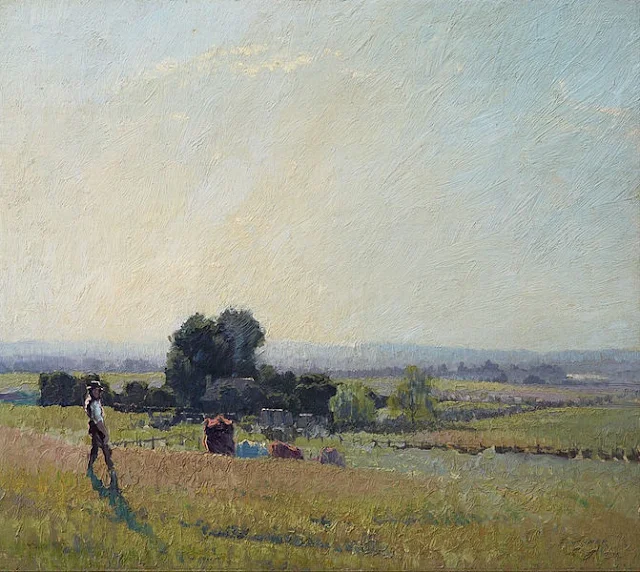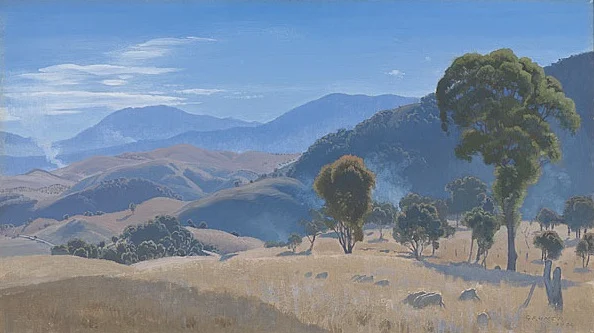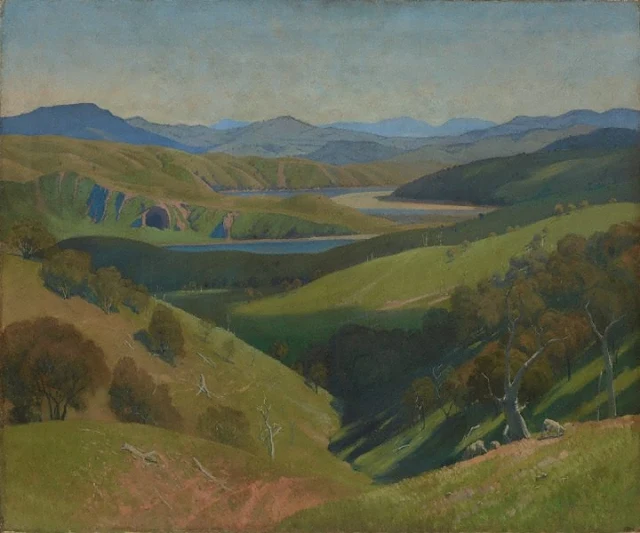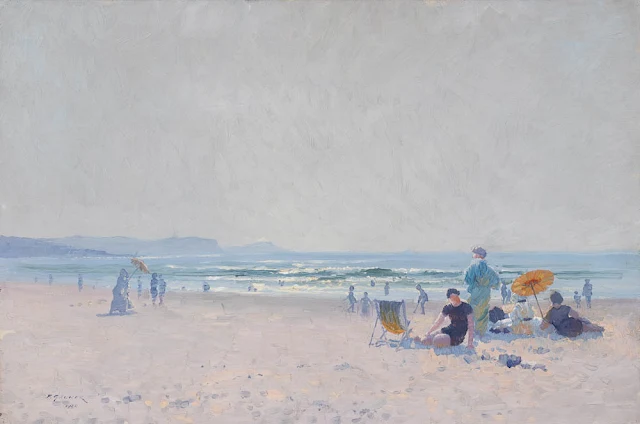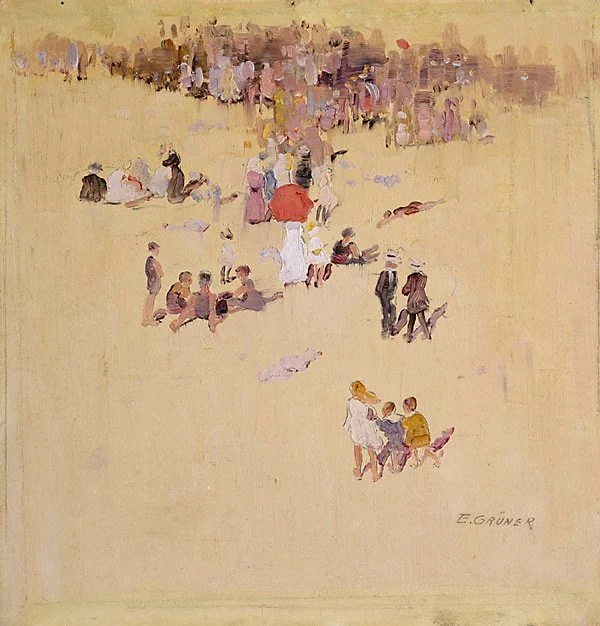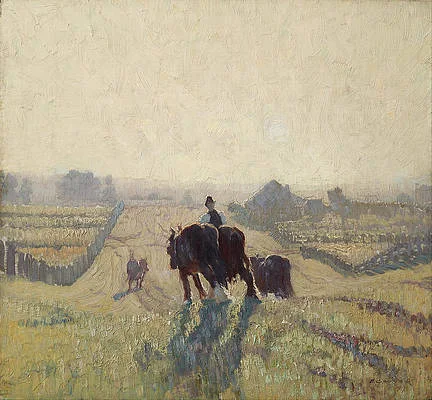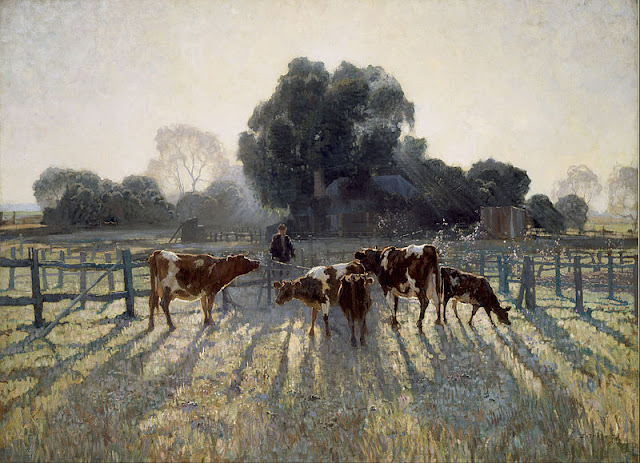Elioth Gruner - Paintings Collection
Born on December 16, 1882, in Gisborne, New Zealand, younger son of Elliott Grüner, a Norwegian-born bailiff, and his Irish wife Mary Ann, who died in 1922. Gruner was brought to Sydney before he was a year old and at an early age showed a desire to draw.
When about 12 years old his mother took him to Julian Ashton, who gave him his first lessons in art. He quickly distinguished himself as a promising talent, earning numerous awards and accolades during his early years as an artist.
From around 1907 his work began to attract serious attention: one admirer was Norman Lindsay. In 1911 a small shop was started in Bligh Street, Sydney, to sell works of art produced in Australia, and for a time Gruner took charge of it.
Spring Frost (1919) The painting depicts a small herd of dairy cows in the early morning. Gruner's most well-known painting, Spring Frost was awarded the Wynne Prize in 1919.
In 1916 he was the winner of the Wynne Prize with a small landscape, "Morning Light", a painting showing the farm of Jim Innes at Emu Plains. This painting was purchased by the Art Gallery of New South Wales (AGNSW). Gruner was again the winner of the Wynne Prize in 1919 with his painting "Spring Frost" depicting Jim Innes and his cattle and in the following year the AGNSW trustees commissioned him to paint a large picture for the gallery, "The Valley of the Tweed".
In 1923 Gruner visited Europe and was away from Australia for around two years. The effect of travel on his work was very noticeable: there was generally a good deal of simplification, more attention to pattern, and a freer and wider sweep of his brush.
Sir William Orpen had provided constructive comments which altered Gruner's style. He became less interested in the problems of light and occasionally his work took on a slightly cold aspect. The changes were not always welcomed by his admirers, but Gruner was right not to allow himself to fall into a groove. He held a one-man show in 1927 and, not being a particularly productive artist, was in a position to sell almost everything he produced.
 Weetangera, Canberra, 1937
Weetangera, Canberra, 1937
Gruner spent much time in finding a suitable subject, and more still in carefully considering it before a brushstroke was made. Later, Gruner became interested in the study of light again, and some excellent work of his last period combined the qualities of his art and his passion. In 1938 he joined and exhibited with Robert Menzies' anti-modernist foundation, the Australian Academy of Art
Throughout his life, Gruner remained dedicated to his craft, constantly refining his techniques and experimenting with different styles and subjects. He was deeply committed to capturing the essence of the Australian landscape, often working en plein air to observe firsthand the interplay of light, color, and nature.
Elioth Gruner's artistic career spanned several decades, and his contributions to Australian art are widely regarded as significant. His works continue to be highly sought after by collectors and are prominently displayed in major galleries across Australia. Gruner's ability to convey the unique beauty of the Australian landscape and his profound impact on the development of Australian art make him an iconic figure in the country's artistic heritage.
Gruner suffered from chronic nephritis and died at his home at Waverley on 17 October 1939, at the age of 56. He was cremated with Anglican rites. He never married but he left descendants in Australia and New Zealand.
Elioth Gruner's artistic legacy lives on, inspiring generations of artists and art enthusiasts alike, and reminding us of the timeless beauty of the Australian landscape.



